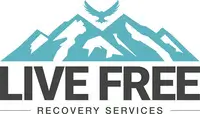Millions of Americans suffer from alcohol use disorders, so it’s no surprise that the consequences of problem drinking are often evident in the workplace. Alcoholic employees may be less productive and more inclined toward injury and absenteeism, which can drive up organizational costs. Their habits can also affect their behavior, damage relationships, and harm employee morale.
According to the National Council on Alcohol and Drug Dependence:
“Alcoholism is a primary, chronic disease with genetic, psychological, and environmental factors influencing its development and manifestations. The disease is often progressive and fatal. It is characterized by impaired control over drinking, preoccupation with the drug alcohol, use of alcohol despite adverse consequences, and distortion in thinking, most notably denial.”
When employers acknowledge how alcohol can impact the workplace and learn more about the legalities surrounding its use, they will be better equipped to create policies that mitigate its negative effects.
Is It Illegal to Drink at Work?
In general, the government does not regulate alcohol consumption at work, although the Omnibus Transportation Employee Testing Act of 1991 mandates drug and alcohol testing in certain safety-sensitive industries. The Equal Employment Opportunity Commission (EEOC) has published rules that govern alcohol testing for job applicants and employees, and it also provides guidance that illustrates how employers can implement testing and when they must make accommodations for their employees.
The Occupational Safety and Health Act (OSHA) requires employers to maintain a safe work environment, and they must take action if an employee’s alcohol consumption puts anyone at risk. Resolving the issue could include temporarily barring the employee from carrying out specific tasks or directing them to pursue treatment.
American employers have the right to forbid their employees from possessing, consuming, or being under the influence of alcohol on the job, and they can take action if they believe that alcohol use is interfering with their performance, creating health or safety hazards, or affecting their behavior. Although the Americans with Disabilities Act (ADA) considers alcoholism to be a disability that gives employees some protections and provides accommodation for counseling, it also permits employers to “discipline, discharge, or deny employment to an alcoholic whose use of alcohol adversely affects job performance or conduct.”
How Company Policies Might Differ from Legal Requirements
All companies must follow government regulations that apply to alcohol consumption at work, and employees who work in high-risk, high-security, or safety-sensitive positions may be subject to more stringent oversight. Beyond this basic level of compliance, employers are free to create and customize policies to suit the needs of their organization. For instance, many companies design codes of conduct that aim to reduce adverse behaviors and promote wellness. Some workplaces enact zero-tolerance policies to make clear that working under the influence of alcohol will not be tolerated if it risks putting other people in harm’s way. Others prohibit alcohol use at work but allow alcoholic beverages to be served at work-related social events.
Typical workplace alcohol policies may include any or all of the following:
- provisions for alcohol use and testing
- an alcohol-free workplace pledge
- a confidentiality agreement
- handbook that includes explanations of prohibited and permissible conduct
- an explanation of the consequences for violating the organization’s alcohol policy
- information about employee assistance program (EAP) services
- training and acknowledgement of an organization’s drug and alcohol policy
Identifying Alcoholism in the Workplace
If an employer believes that one of their employees may be drinking or inebriated on the job or suffering from the effects of alcoholism, they should proceed with caution. Illness, legal medication, and extreme stress or fatigue can cause people to behave erratically, slur their speech, or become drowsy.
Signs of Alcohol Misuse
While managers should be on the lookout for signs of alcohol use at work, it’s a bad idea to accuse an employee of being intoxicated. The manager’s first responsibility is to ensure that everyone is safe and to forgo punishing an employee who is impaired until more information is known.
When employers notice signs of alcohol misuse, like tremors or unsteady movements, bloodshot eyes, or the scent of alcohol, they should express concern and mention the troubling symptoms they are noticing without being confrontational. They should also document what they observe. The only way to be sure that a person is misusing alcohol at work is to subject them to an alcohol test.
Employers should also pay attention if a person frequently leaves, misses, or comes in late to work without providing notice or explanation or shows other strange patterns or irregularities in their attendance, such as missing several Mondays or Fridays. Performance issues, such as badly executed or incomplete work, missed deadlines, and careless errors accompanied by bad excuses for poor work, can also indicate trouble is brewing.
Impact on Colleagues and Work Environment
Alcohol misuse at work can negatively affect many people, not just the person who drinks. One person’s poor performance or disruptive behavior can create bad feelings and resentment within a group and make it hard for a team to work together. Hostile or antisocial behavior can create strain in relationships with colleagues.
Potential Safety Risks
If managers or supervisors suspect alcohol is to blame for a cluster of recurring performance and behavioral problems, they need to ensure that these issues are not causing safety risks. If their employee operates heavy machinery or equipment, deals with sensitive information, or is responsible for the security, safety, or well-being of one or more people, it’s imperative that employers recognize and mitigate any potentially dangerous behaviors and schedule an assessment with the company’s employee assistance program (EAP), possibly test them for alcohol use, and provide help and discipline as needed.
Disciplinary Action
When employees use or are influenced by alcohol at work in a manner that company policy prohibits, the employer may take disciplinary action, such as altering their workload, making verbal or written warnings, or terminating their employment. Employees who use alcohol on the job might be sent home, required to undergo an assessment, or take an alcohol test. If they have engaged in criminal behavior while under the influence, they may face legal consequences for their actions. Employees who refuse to comply with their employer’s alcohol policy can be disciplined according to its outlined provisions.
Legal Aspects of an Employer’s Responsibilities and Approaches to Alcoholism
In the United States, addressing alcoholism in the workplace can be legally complex. Although employees with alcohol use disorders have some legal protections, employers have the right to maintain a productive work environment and can terminate employees for poor performance or behavior.
To avoid exposing themselves to legal action, employers must understand what is legally permissible and follow specific procedures when dealing with alcohol-related issues. They should also make a clear, written alcohol policy and relevant training available so that employees cannot claim to be uninformed about prohibited conduct.
When dealing with alcohol-related incidents, employers should always:
- document the date, time, and the impact on safety or job performance any time an alcohol-related incident occurs to corroborate the need for disciplinary action.
- apply policies consistently to avoid claims of favoritism or discrimination.
- progressively discipline employees and provide access to EAPs to show that effort was made to help the employee correct their behavior.
- follow all legal requirements, provide explanation for actions taken, and document evidence of any contributing factors when applying discipline or terminating employment.
Providing Access to Employee Assistance Programs (EAPs) and Counseling
When employers notice that an employee is having problems with performance, attendance, or behavior or have evidence of alcohol-related impairment, they should refer the employee to the company’s employee assistance program for a confidential assessment and short-term counseling. The EAP can also provide access to more intensive treatment programs or resources while reminding the employee that they are accountable for their own rehabilitation and recovery.
Employee Rights and Support
Employers should always make an effort to support an alcoholic employee’s wellness, protect their rights, and provide support at work. Since alcoholism is classified as a disability under the ADA, employers must give some accommodation to alcoholic employees struggling who are seeking treatment when their job performance is unaffected. The Family and Medical Leave Act (FMLA) may allow some employees to request up to 12 weeks of unpaid leave for serious health conditions, which include treatment for alcoholism.
To reduce the effects of alcoholism at work, employers can promote a healthy work environment and provide access to self-care tools, counseling, and wellness programs. Creating a supportive culture that encourages a healthy work-life balance may make it easier for employees to recover and thrive.
Addressing the Reality of Alcoholism is Key to Creating a Healthier Workplace
Alcoholism is a real and prevalent condition that can have devastating consequences. Addressing employee alcohol use with a combination of compassion, firm discipline, and clear policies can go a long way toward creating a safe and supportive work environment. Identifying issues and answering questions about legality, employer responsibilities, employee rights, and preventative measures can go a long way toward mitigating the effects of alcoholism on the job.


